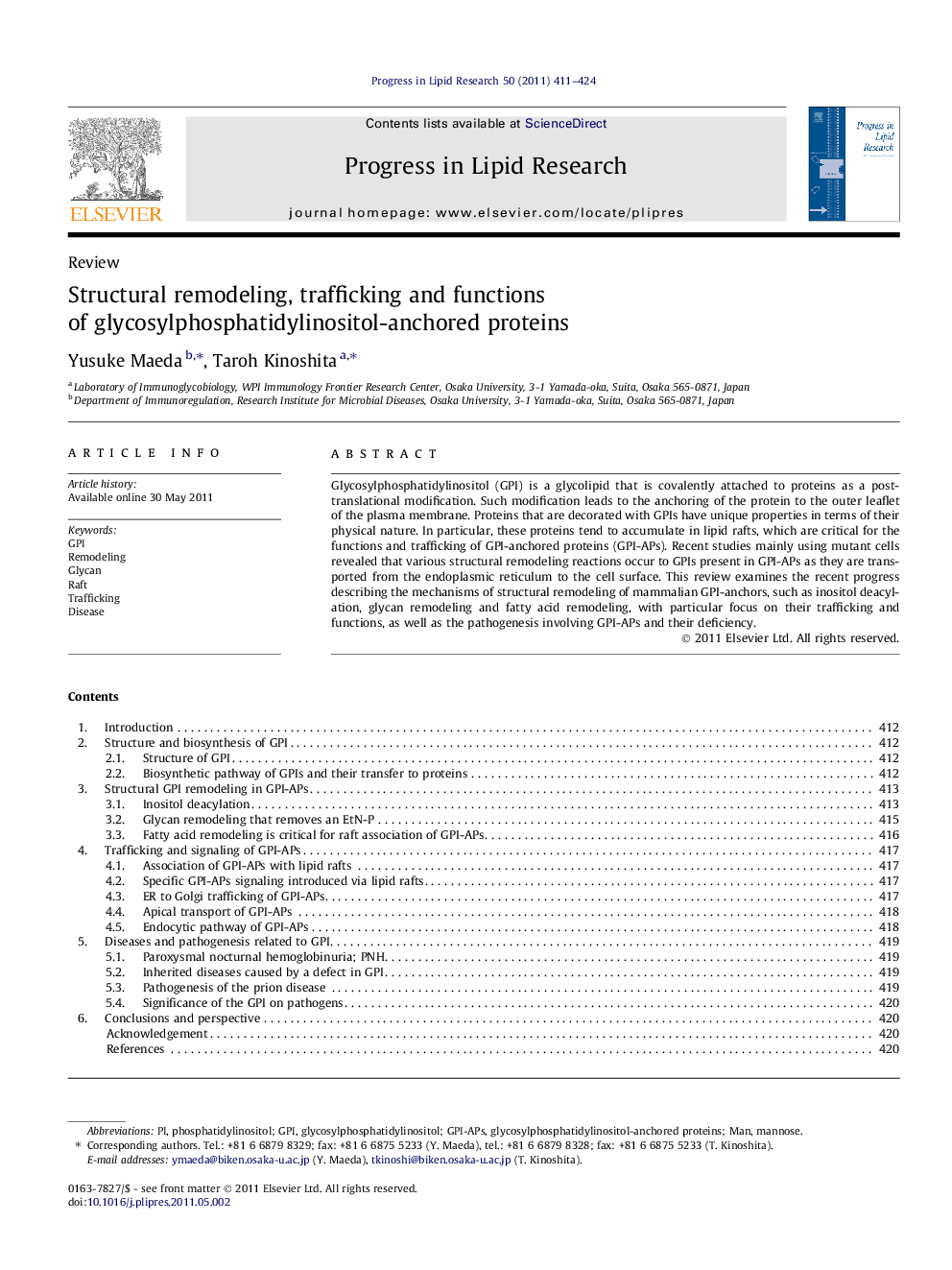| Article ID | Journal | Published Year | Pages | File Type |
|---|---|---|---|---|
| 2019164 | Progress in Lipid Research | 2011 | 14 Pages |
Glycosylphosphatidylinositol (GPI) is a glycolipid that is covalently attached to proteins as a post-translational modification. Such modification leads to the anchoring of the protein to the outer leaflet of the plasma membrane. Proteins that are decorated with GPIs have unique properties in terms of their physical nature. In particular, these proteins tend to accumulate in lipid rafts, which are critical for the functions and trafficking of GPI-anchored proteins (GPI-APs). Recent studies mainly using mutant cells revealed that various structural remodeling reactions occur to GPIs present in GPI-APs as they are transported from the endoplasmic reticulum to the cell surface. This review examines the recent progress describing the mechanisms of structural remodeling of mammalian GPI-anchors, such as inositol deacylation, glycan remodeling and fatty acid remodeling, with particular focus on their trafficking and functions, as well as the pathogenesis involving GPI-APs and their deficiency.
► We review recent progress in studies on glycosylphosphatidylinositol (GPI). ► Three different GPI remodeling reactions occur in GPI-anchored proteins during the transport to the cell surface. ► GPI is an important factor that defines the behaviors of GPI-anchored proteins, such as trafficking and signal transductions. ► Several inherited and acquired diseases such as paroxysmal nocturnal hemoglobinuria are caused by impaired GPI biosynthesis. ► GPI is implicated in pathogenesis of the prion disease.
